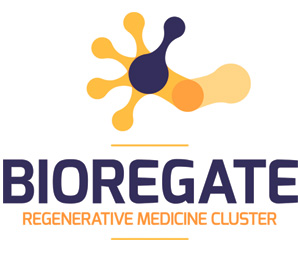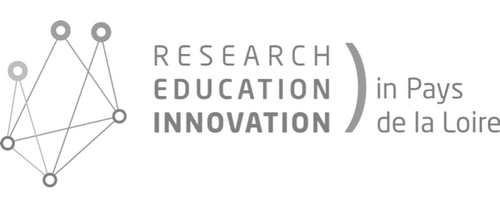Organization activities
Created in 2004, the GeM Institue gathers 230 persons spread in 2 Nantes locations (Ecole Centrale and Faculté des Sciences et Techniques) and Saint Nazaire “IUT“ campus. Depending on 3 institutions (CNRS, École Centrale de Nantes, Université de Nantes), the GeM Institute is organized in 6 research teams and 3 main research topics: design of structures, civil engineering, materials and processes.
Materials – Processes – Structures is the shared research triptych of our belonging teams. Their goal is mainly to develop and implement integrated approaches for industrial components: design and fabrication steps and finally making them fully operational. Targeted industries can be automotive sector, energy, civil engineering…
A vast range of materials are investigated: geomaterials, metallic materials, polymers, composite materials. The work relies mainly on rheology, assembly and material use experiments. Dealing with the last point, researchers analyze material reactions and in particular responses to environment and mechanical stress that can be extreme (seismic, crash), durability/sustainability (risk management, analysis of product life cycle).
Currently, only PMM and E3M are directly involved in Bioregate projects.
Research activities
E3M Research Group – Mechanical state and Microstructure of Materials
The E3M team has two main research topics: study of composite materials, made from organic matrices durability/ sustanability when interacting with environment and numerical and experimental study of metallic polycristalline materials in their thermomechanical behavior and in particular in terms of plasticity. Both topics rely on multi scale approaches.
Team leader: Frédéric JACQUEMIN – Frederic.Jacquemin@univ-nantes.fr
IEG Research Group – Interactions Water-Geomaterials
Our main goals is to contribute to durability of buildings, infrastructures and art buildings and to limit the structures impacts on the environment.
Thus, we work on mechanical and physicochemical features characterization, mass and heat transfers of (geo)materials and also the analysis of their life cycle.
Team leader: Abdelhafid KHELIDJ – Abdelhafid.Khelidj@univ-nantes.fr
MEO Research Group – Materials-Environment-Structures
The activities of the Materials-Environment-Structures research group have developed around three axes: multi-scale approaches, sustainability of structures and multiphysical couplings, and behavior of structures under complex loads.
The work undertaken has brought new solutions for controlling the durability of structures in their environment. New experimental techniques have been developed and have demonstrated well-identified behaviors of rock and cement materials.
Two types of numerical modeling have been developed: for in-depth analysis of the microstructure of materials and for a predictive analysis of the behavior of the structures.
The group’s research work is carried out almost exclusively in collaboration with an industrial partner or in the framework of a collaborative project with the support of industrialists.
Research topics
- Soil Structure Interactions
- Durability of structures and multi-physical couplings
- Deferred behavior of cementitious materials
- Performance-based approach to the durability of concretes and constructions
- Thermal properties of cementitious materials and building structures
- Scale effect on the mechanical behavior of quasi-fragile cementitious materials
Team leader: Ahmed LOUKILI – Ahmed.Loukili@ec-nantes.fr
PMM Research group – Processes and Mechanics of Materials
- Design, modelling and technology of innovative processes:
- Process constrained path generation
- Additive manufacturing
- Composite processes
- High-pulse high-strain deformation processes
- Design for sustainable processes
- Experimental techniques, modeling and numerical tools for the mechanics of materials:
- Mechanics of elastomers
- Experimental and numerical integrated approaches
Team leader: Christophe BINETRUY – Christophe.Binetruy@ec-nantes.fr
MS Research group – Modelling and Simulation
Research field:
The MS research group deals with modelling and simulation for three main applications: couplings (mechanical / thermal / diffusion and contact), durability (composite materials, metallic, concrete) and uncertainties (in a multi-scale or model reduction framework).
The research is conducted with a multidisciplinary approach bringing together numerical mechanics, theoretical mechanics, mathematics, technology and computer science.
The team is developing an integrated modelling / simulation approach. Indeed, numerical simulation can not be considered independently from the modelling approach adopted in many coupling, durability and uncertainty problems. Careful consideration (notably using theoretical mechanics and mathematical tools) must be given to the modelling in order to combine with robust and efficient numerical simulation methods.
Research topics:
- Modeling of electrical cables and anchoring fluid and thermal coupling
- Contact, friction, variational inequality
- Damage, Rupture, Level Set
- Fatigue, Composite, Self heating
- Crash, Composite, Behavior
- Uncertainties and Model Reduction
- Uncertainties, Multi-scale, Defects
Team leader: Nicolas MOËS – Nicolas.Moes@ec-nantes.fr
TRUST Research group – Status, reliability, calculation of structures
Membranous structures:
Membranous structures have remarkable properties (lightweight, flexibility, cost). The challenge is to develop real “mechanics of membranous structures” to better control the use of this kind of structures. Modelling is extended to interaction between membranes and fluid environment. Until now, the fields of applications we are interested in are marine renewable energies, stratospheric balloons and rescue structures.
The team develops conceptual and numerical non linear models which are then validated in experimental trials.
Probabilistic modelling of degradation, reliability calculation and maintenance optimization in uncertain environments:
Considering in structure calculation the uncertainties of the model, related to materials properties, mechanical and climate stress, geometry is now required if we look for reliable numerical predictions meaning usable in design or decision making processes.
Structure reliability testing:
We work on:
- in situ measurements of physico-mechanical properties considering site feasibility, cost-efficiency and technics,
- the development of innovative sensors, mainly with optical fibers.
Team leader: Franck SCHOEFS – Franck.Schoefs@univ-nantes.fr

